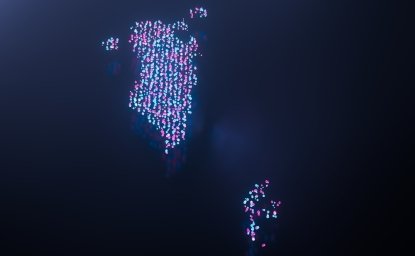
A blog of the Science and Technology Innovation Program

Protecting the Watershed
Washington DC is known for many things: academia, politics, restaurants, culture, but the people at the Anacostia Watershed Society (AWS) want to add to the cannon: biodiversity.
In the 1980’s DC's Anacostia River was cited as one of the most polluted waterways in the United States. To combat this problem, the AWS was formed in 1989 to specifically target and revive the neglected but incredibly unique environment. To begin, AWS started campaigns and movements on the small scale conducting cleanups and water testing in the Anacostia. But they also took on a policy role with campaigns aimed at stopping the degradation of the Anacostia River ecosystem.
AWS has put forward efforts to make the watershed a place for recreation, education, and citizen science, using volunteers and community members to help understand the watershed. An example of how these three elements come together is through Bioblitzes.
Experiencing a Bioblitz
Bioblitzes are an exciting way that organizations like the National Parks Service and National Geographic have used to get crowdsourced biodiversity data. Usually during the span of a weekend or a day, a Bioblitz will be set up in a certain community, wildlife preserve, or park. Citizen volunteers are encouraged to experience the environment around them while taking pictures -- effectively collecting data -- that the organizations running the event can use for research and make public.
Equipped with a camera and the iNaturalist app, I attended AWS’ first annual Bioblitz on Friday, September 22 and got a front row seat to the possibilities the watershed has to offer.
It’s important to note I only attended one of the many events scheduled for that weekend. Other Bioblitz events included: Submerged Aquatic Vegetation Bed Exploration, a Nature Foray at the Beltsville Agricultural Center Forests, a Canoe Exploration at Kenilworth Park, and a Tree Bioblitz at Benning Stoddert Recreation Center with the organization Casey Trees. Each of these events happened during the weekend of the 22nd. Citizen science volunteers signed up for the event with two objectives, experience the watershed and contribute to the collection of the biodiversity data.
When I showed up early Friday morning I was greeted by Maddie Koenig, a staff member of AWS, who would lead me and the other Bioblitzers through the trails of Heritage and Kingman Islands. Located north of RFK Stadium, Kingman and Heritage Islands are two man-made islands that are a hotbed for floral growth and faunal relocation. They are a prime environment to get a sense of the diversity of the Anacostia ecosystem, exposing us to a wealth of flora and fauna to identify and document for a living and changing wildlife database.
The nature walk was constantly punctuated with the group stopping to identify a different species of weed, flower, or insect. When we stopped one of us would proclaim “I got it,” and pull up the iNaturalist app on our phones to take a picture of the specimen.
For insects, the picture was pretty straightforward, one and done. But for the plants, one picture from one perspective isn’t necessarily enough to confirm the species data, so we would take a picture of the flower, the stem, the underside of the leaves, you get the picture. After taking the photo we chose to either include a species name of what we thought the plant/animal was, or we would leave it unknown for an expert to hopefully weigh in on. Sure enough, about 20 minutes into contributing to my first Bioblitz, I received a message from an iNaturalist community member corroborating my species classification of the deep indigo berries of the American Pokeweed (Phytolacca decandra).
The Takeaways
This experience with iNaturalist and the Bioblitz was unique. I was able to get a sense of accomplishment as well as a sense of inclusion in a community that was doing its best at understanding the world around them (and us). I must admit that I was almost completely going off of the groups understanding of the biodiversity around me, seeing as my prior education never focused on the indigenous and invasive species of the Anacostia watershed.
But even so, not until I had the app at my fingertips did I truly comprehend just how many diverse weeds, flowers, grasses, trees, and bushes could fit into one ecosystem. And that’s one of the important points about this unique ecosystem. Because there is so much biodiversity coupled with the presence of invasive diseases, it’s important to have a living record of the biota. Invasive species have the ability to push out the original species, so monitoring is essential to understanding the invasive threats to the islands’ wildlife. The living record also serves as a history of the land informing future staff members, researchers, and civilians of what evolution the environmental structure has undergone.
Biodiversity monitoring is just a piece of the AWS’s plans to restore the watershed. AWS is leading multiple efforts to make the land and the water a place that people can swim, run, relax, learn, and research It was easy to forget I was walking on a man-made island in the shadow of the Capitol. There were slight reminders like the view in between the trees of the RFK Stadium or the East Capitol St Bridge running across the bottom of Kingman Island. These reminders running parallel to the vast swath of biodiversity we were recording and proved the dynamic nature of a Bioblitz. The recreational, educational, and citizen scientific components of the program were not only enjoyable but also easily translational to environmental education at every grade level for all communities.
So, was the weekend a success? Are people actually willing to sacrifice a couple hours on the weekend for the noble pursuit of biodiversity research? Yes, and yes. After the Bioblitz, 1,640 observations were recorded of 507 species by 103 observers and 9 RTE (rare, threatened or endangered) species were recorded. Spanning from 22 unique observations of the pastel colored Porcelain Berries (Ampelopsis brevipedunculata) to 9 observations of the dignified Bald Eagle (Haliaeetus leucocephalus), the weekend further educated DMV residents, and anyone with an internet connection, on what species could literally be right in their backyard. But it's important to look at the Bioblitzes not as an isolated annual event. iNaturalist allows for the creation of “projects” that are living databases anyone can contribute to, at any time. Currently, the “Biodiversity of the Anacostia River” project contains records of 935 unique species and 2,650 observations.
Data collected by this Bioblitz, and others across the country, serve multiple big picture purposes. Researchers can use this to analyze population migration and location, while environmentalists can work on conservation efforts to protect those previously mentioned RTEs. On a smaller scale, the biodiversity data collected by projects like these can serve as a steward to the public. From school groups to urban explorers, this data can fuel the treasure hunter in all of us. Luckily this treasure chest isn’t buried under a large red X in the middle of a desert. No, this treasure is above you, below you, next to you and maybe even buzzing right under your nose.
Author




